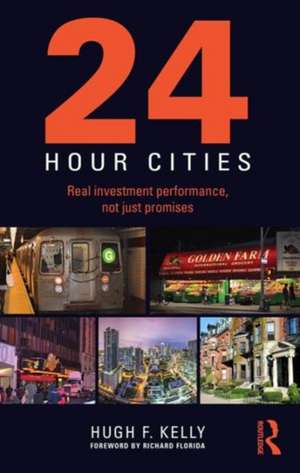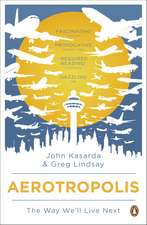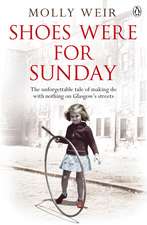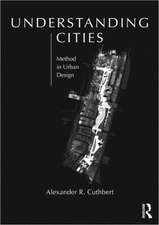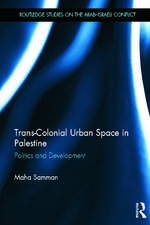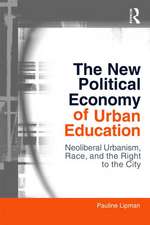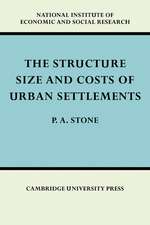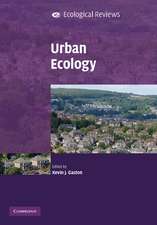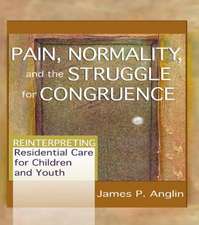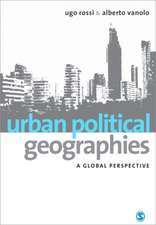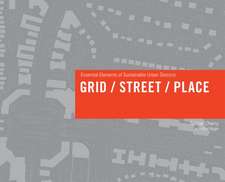24-Hour Cities: Real Investment Performance, Not Just Promises
Autor Hugh F. Kellyen Limba Engleză Paperback – 31 mar 2016
24 Hour Cities is the very first full length book about America’s cities that never sleep. Over the last fifty years, the nation’s top live-work-play cities have proven themselves more than just vibrant urban environments for the elite. They are attracting a cross-section of the population from across the U.S. and are preferred destinations for immigrants of all income strata. This is creating a virtuous circle wherein economic growth enhances property values, stronger real estate markets sustain more reliable tax bases, and solid municipal revenues pay for better services that further attract businesses and talented individuals.
Yet, just a generation ago, cities like New York, Boston, Washington, San Francisco, and Miami were broke (financially and physically), scarred by violence, and prime examples of urban dysfunction. How did the turnaround happen? And why are other cities still stuck with the hollow downtowns and sprawling suburbs that make for a 9-to-5 urban configuration? Hugh Kelly’s cross-disciplinary research identifies the ingredients of success, and the recipe that puts them together.
| Toate formatele și edițiile | Preț | Express |
|---|---|---|
| Paperback (1) | 325.36 lei 6-8 săpt. | |
| CRC Press – 31 mar 2016 | 325.36 lei 6-8 săpt. | |
| Hardback (1) | 822.34 lei 6-8 săpt. | |
| CRC Press – 18 apr 2016 | 822.34 lei 6-8 săpt. |
Preț: 325.36 lei
Preț vechi: 379.26 lei
-14% Nou
Puncte Express: 488
Preț estimativ în valută:
62.26€ • 67.61$ • 52.30£
62.26€ • 67.61$ • 52.30£
Carte tipărită la comandă
Livrare economică 23 aprilie-07 mai
Preluare comenzi: 021 569.72.76
Specificații
ISBN-13: 9781138805118
ISBN-10: 1138805114
Pagini: 326
Ilustrații: 24 black & white tables, 5 black & white halftones, 55 black & white line drawings
Dimensiuni: 156 x 234 x 22 mm
Greutate: 0.45 kg
Ediția:1
Editura: CRC Press
Colecția Routledge
ISBN-10: 1138805114
Pagini: 326
Ilustrații: 24 black & white tables, 5 black & white halftones, 55 black & white line drawings
Dimensiuni: 156 x 234 x 22 mm
Greutate: 0.45 kg
Ediția:1
Editura: CRC Press
Colecția Routledge
Public țintă
Academic and Professional Practice & DevelopmentCuprins
Introduction: The 24-Hour City Hypothesis, 1. The Dynamism of the American City: Triumphs and Troubles, 2. The Fifties: A revolutionary decade?, 3. Selling and Buying the American Dream, 4. The Hollowing of the Center, 5. Central Tendencies vs. the Hollow-Core Story, 6. Trends Behind the Trends, 7. What Makes the 24-hour City Different?, 8. Fourteen Cities, 9. Voting with the Wallet: Paying a Premium for the 24-hour City, 10. Gleanings from the Past and Present; Glimmers for the Future
Notă biografică
Hugh F. Kelly is a Clinical Professor of Real Estate at the NYU Schack Institute of Real Estate. He served as the 2014 Chair of the Board for the Counselors of Real Estate organization, and heads his own consultancy practice. He frequently speaks at international academic and industry conferences.
Recenzii
'24-Hour Cities is a must-read for real estate professionals, economic and community developers, city leaders and urbanites of all stripes. More than that, it’s an engrossing read for anyone who is captivated by the speed, energy, and extravagant adaptability of the new age of 24-hour urbanity.' Richard Florida, author of the best-selling The Rise of the Creative Class.
‘Hugh Kelly’s 24-Hour Cities is a must-read for today’s real estate investors. It overflows with insights derived from the author’s long career as a leading commercial real estate researcher gifted with a keen sense of the wider social sciences. Hugh Kelly is an astute analyst of the forces that make cities vibrant; he artfully reminds us that successful cities are where people want to live, work, and play.’ Martha S. Peyton, Managing Director, TIAA-CREF
‘Hugh Kelly proves that a well written, insightful economics book is not an oxymoron. In 24-Hour Cities Kelly also validates an assertion made two decades ago and he connects today’s discussion on the future and shape of cities to its historical evolution. This is a must-read for urbanists and those who wish to be ahead of the curve.’ Raymond G. Torto, Lecturer, Harvard Graduate School of Design
‘Five-hundred years ago, in 1516, Sir Thomas More’s Utopia described the ideal city. We have not created it yet, and it is unlikely we will do so soon. In his formidable study 24-Hour Cities, Hugh Kelly analyzes the evolution of American cities since World War II and discusses the current leading models: the 24-hour city, the 9-to-5 city, the large market city. There can be no one model, no one ideal city, since socioeconomic factors and public preferences differ. The fourteen cities Kelly examines are not problem-free. He shows how the best excel at solving problems and meeting challenges – of business opportunities, culture, livability and innovation. They optimize human capital, financial capital, physical capital and social capital. 24-Hour Cities thoughtfully reviews the plus and minus factors that attract or repel various city occupants – the young, creative, entrepreneurial; the older, established, conventional; those seeking lowest cost vs. those willing to address higher costs for the benefits received. It will be a leading urban affairs text of 2016.’ Daniel Rose, Chairman, Rose Associates, Inc.
‘Hugh Kelly’s book 24-Hour Cities is a remarkable achievement. It puts empirical flesh on the bones of the 24-hour city hypothesis. Of the fourteen largest commercial real estate metro areas, he names and analyzes the seven that are 24-hour cities and the seven that are not. There is nothing fuzzy or vague about why some are and some are not. This is an important book for real estate analysts as well as urban scholars.’ Matthew Drennan, Visiting Professor of Urban Planning, UCLA
‘When RERC and Equitable Real Estate coined the term "24-hour cities" in the 1995 issue of Emerging Trends in Real Estate, we envisioned these markets – the cities where Americans could best live, work and play – as the places that would lead the fledgling commercial real estate recovery at that time. This concept was originated through interviews for Emerging Trends in Real Estate, which I was part of as president of RERC. As president of Situs RERC today, I am pleased to state that with this book, Hugh Kelly has truly embraced the concept of 24-hour cities and has taken it to another level by investigating what a 24-hour city currently means (versus 9-to-5 marketplaces). Based on his case studies and qualitative research, Kelly disputes and refutes old claims, examines socioeconomic and demographic trends, and artfully describes how 24-hour cities have evolved while competitively attracting physical, financial, and human capital. I congratulate him on this outstanding portrayal of what we only began to conceive of 20-some years ago.’ Ken Riggs, President, Situs RERC
‘Cities are an increasingly hot topic. Unfortunately, much of the commentary in recent books on cities is anecdotal or agenda driven. Therefore, Kelly’s original research and focus on 24-hour cities is most timely. Kelly is uniquely qualified to have written this seminal work, being actively engaged in both the private sector and academia. He is respected internationally. 24-Hour Cities is topical, fact driven and highly readable. It will set a new standard in our understanding of the modern city state.’ William McCarthy, CRE
‘Hugh Kelly’s 24-Hour Cities is a must-read for today’s real estate investors. It overflows with insights derived from the author’s long career as a leading commercial real estate researcher gifted with a keen sense of the wider social sciences. Hugh Kelly is an astute analyst of the forces that make cities vibrant; he artfully reminds us that successful cities are where people want to live, work, and play.’ Martha S. Peyton, Managing Director, TIAA-CREF
‘Hugh Kelly proves that a well written, insightful economics book is not an oxymoron. In 24-Hour Cities Kelly also validates an assertion made two decades ago and he connects today’s discussion on the future and shape of cities to its historical evolution. This is a must-read for urbanists and those who wish to be ahead of the curve.’ Raymond G. Torto, Lecturer, Harvard Graduate School of Design
‘Five-hundred years ago, in 1516, Sir Thomas More’s Utopia described the ideal city. We have not created it yet, and it is unlikely we will do so soon. In his formidable study 24-Hour Cities, Hugh Kelly analyzes the evolution of American cities since World War II and discusses the current leading models: the 24-hour city, the 9-to-5 city, the large market city. There can be no one model, no one ideal city, since socioeconomic factors and public preferences differ. The fourteen cities Kelly examines are not problem-free. He shows how the best excel at solving problems and meeting challenges – of business opportunities, culture, livability and innovation. They optimize human capital, financial capital, physical capital and social capital. 24-Hour Cities thoughtfully reviews the plus and minus factors that attract or repel various city occupants – the young, creative, entrepreneurial; the older, established, conventional; those seeking lowest cost vs. those willing to address higher costs for the benefits received. It will be a leading urban affairs text of 2016.’ Daniel Rose, Chairman, Rose Associates, Inc.
‘Hugh Kelly’s book 24-Hour Cities is a remarkable achievement. It puts empirical flesh on the bones of the 24-hour city hypothesis. Of the fourteen largest commercial real estate metro areas, he names and analyzes the seven that are 24-hour cities and the seven that are not. There is nothing fuzzy or vague about why some are and some are not. This is an important book for real estate analysts as well as urban scholars.’ Matthew Drennan, Visiting Professor of Urban Planning, UCLA
‘When RERC and Equitable Real Estate coined the term "24-hour cities" in the 1995 issue of Emerging Trends in Real Estate, we envisioned these markets – the cities where Americans could best live, work and play – as the places that would lead the fledgling commercial real estate recovery at that time. This concept was originated through interviews for Emerging Trends in Real Estate, which I was part of as president of RERC. As president of Situs RERC today, I am pleased to state that with this book, Hugh Kelly has truly embraced the concept of 24-hour cities and has taken it to another level by investigating what a 24-hour city currently means (versus 9-to-5 marketplaces). Based on his case studies and qualitative research, Kelly disputes and refutes old claims, examines socioeconomic and demographic trends, and artfully describes how 24-hour cities have evolved while competitively attracting physical, financial, and human capital. I congratulate him on this outstanding portrayal of what we only began to conceive of 20-some years ago.’ Ken Riggs, President, Situs RERC
‘Cities are an increasingly hot topic. Unfortunately, much of the commentary in recent books on cities is anecdotal or agenda driven. Therefore, Kelly’s original research and focus on 24-hour cities is most timely. Kelly is uniquely qualified to have written this seminal work, being actively engaged in both the private sector and academia. He is respected internationally. 24-Hour Cities is topical, fact driven and highly readable. It will set a new standard in our understanding of the modern city state.’ William McCarthy, CRE
Descriere
In 24-hour Cities: Real Performance, Not Just Promises, esteemed real estate economist Hugh Kelly examines the evidence for the claim that the 24-hour city is "better". Through detailed historical reflection and the examination of 14 American cities, Kelly looks at the claims made for and against 24-hour cities, and attempts to sort out the hows and whys that emerge as we consider not only the differences between cities, but their comparative advantages.
The results of his discussion have significant implications not only for the real estate industry, but for public planning and policy.
The results of his discussion have significant implications not only for the real estate industry, but for public planning and policy.
